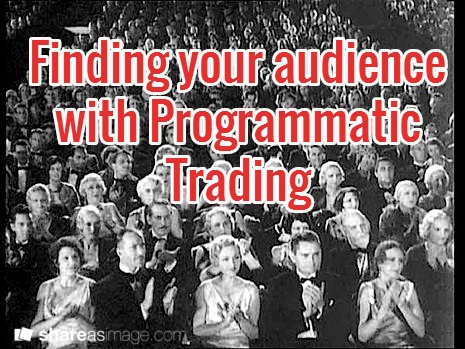
TV and online video have always been divided.
While TV ads have traditionally been booked using limited demographic and viewing data (thus the focus on branding), online video has used richer behavioural and demographic data sets to more accurately target audiences and drive direct response sales.
However, brands have come to realise that the Web isn’t just about click-throughs. Online video can do just as good a job with branding, and the desire from advertisers for more opportunities to buy into online video has only skyrocketed. There’s just not enough inventory available locally in Australia, so many have turned to trading exchanges that are plugged in to content sources overseas.
That is what led to this country entering the programmatic video buying arena. Not that it offered accurate targeting and simplified processes and enabled more holistic campaigns – though that was certainly a welcome by-product.
No, we just needed more places to advertise.
As with all things digital, that’s all changing now. Yet again.
Agencies and clients are starting to see how programmatic tools can optimise campaigns, not just allowing for a broader access of inventory. Nor is it just about getting the best price through real-time bidding.
In fact, many advertisers are bringing aboard their own inventory deals. Today it’s all about planning more effective campaigns and reducing the spend on the myriad of technologies that sat between the advertiser and the audience. This is what has come to be known as the “tech tax”, or the cost of doing business in today’s complicated digital advertising world.
At long last, Australia is stepping up to the mark. Programmatic spend between 2014 and 2017 is estimated to total AU$5 billion. It’s a long way behind the US$100billion forecast in the US, but we’re seeing some traction.
And we’re starting to use programmatic advertising the way it was intended – to target, report and fine-tune online video advertising. Getting the best price is part of the mix, but an increasing array of ‘data smarts’ is adding a layer of sophistication to media planning, meaning advertisers reach the right people and publishers can improve their yields. At the same time they get instant access to performance data, so campaigns can be tuned-up on-the-fly, rewarding the best performing channels with more ad dollars.
So, we might have entered the programmatic space for all the wrong reasons, but we’re heading in the right direction. And programmatic buying will sweep across the industry in coming years. Already in the US, IPG’s MAGNA GLOBAL, one of the most powerful media trading units in the US, is aiming for 50 percent automated buying by 2016.
Meanwhile, TV has carried on as usual. Sales teams have been doing their best to secure an optimum price, make promises on demographics, and then scramble when they don’t quite deliver on the numbers. That’s changing too, though. Already in the US programmatic TV is offering the sophistication of online trading platforms for the TV fraternity.
They might be making the shift late in the day, but it is for all the right reasons – to add value to the inventory, so advertisers and broadcasters both win.